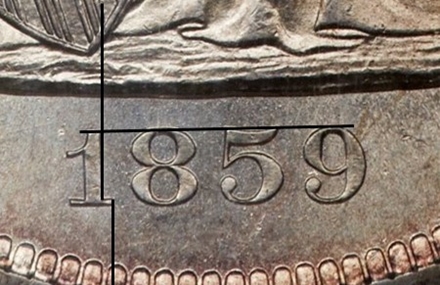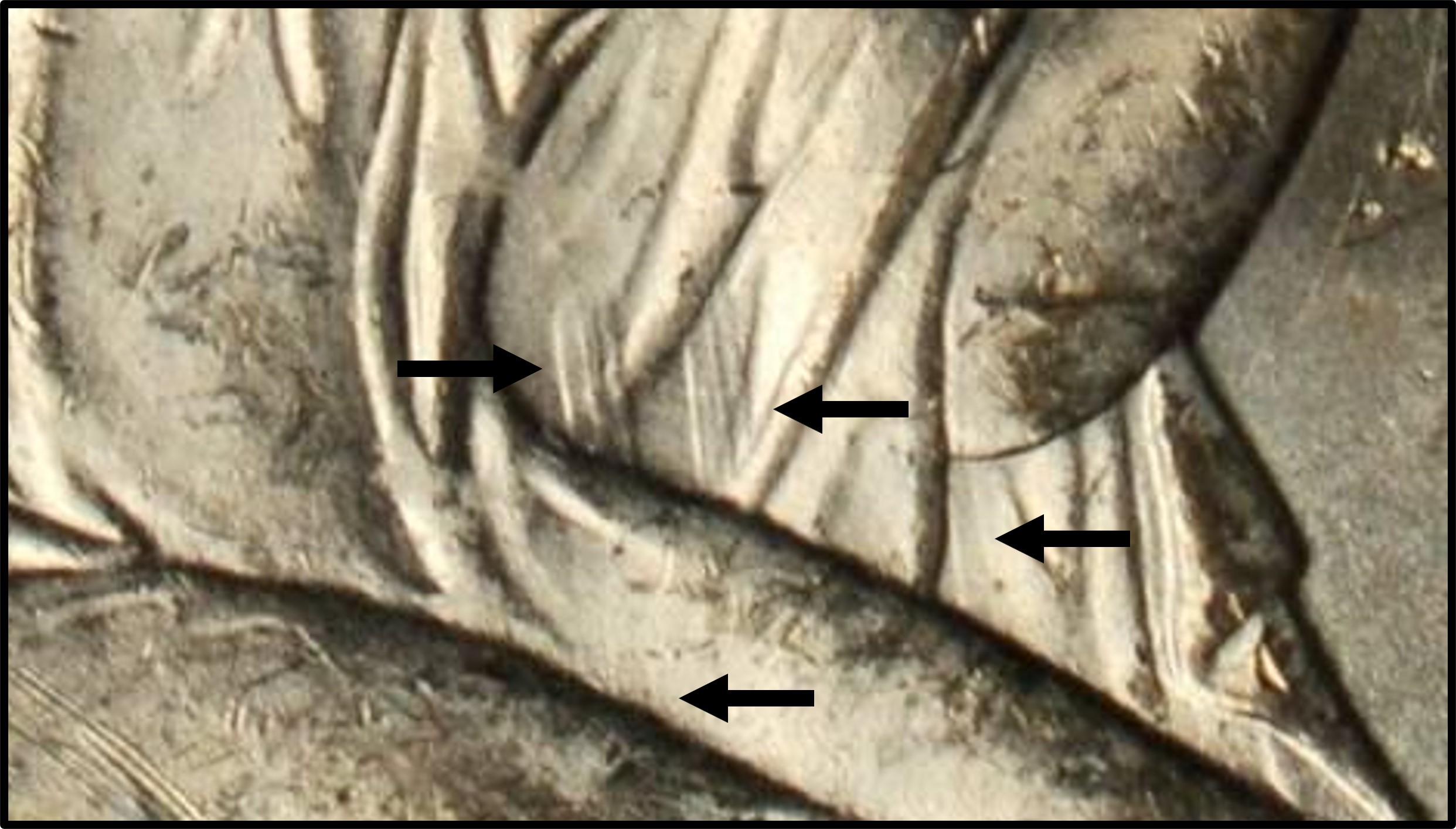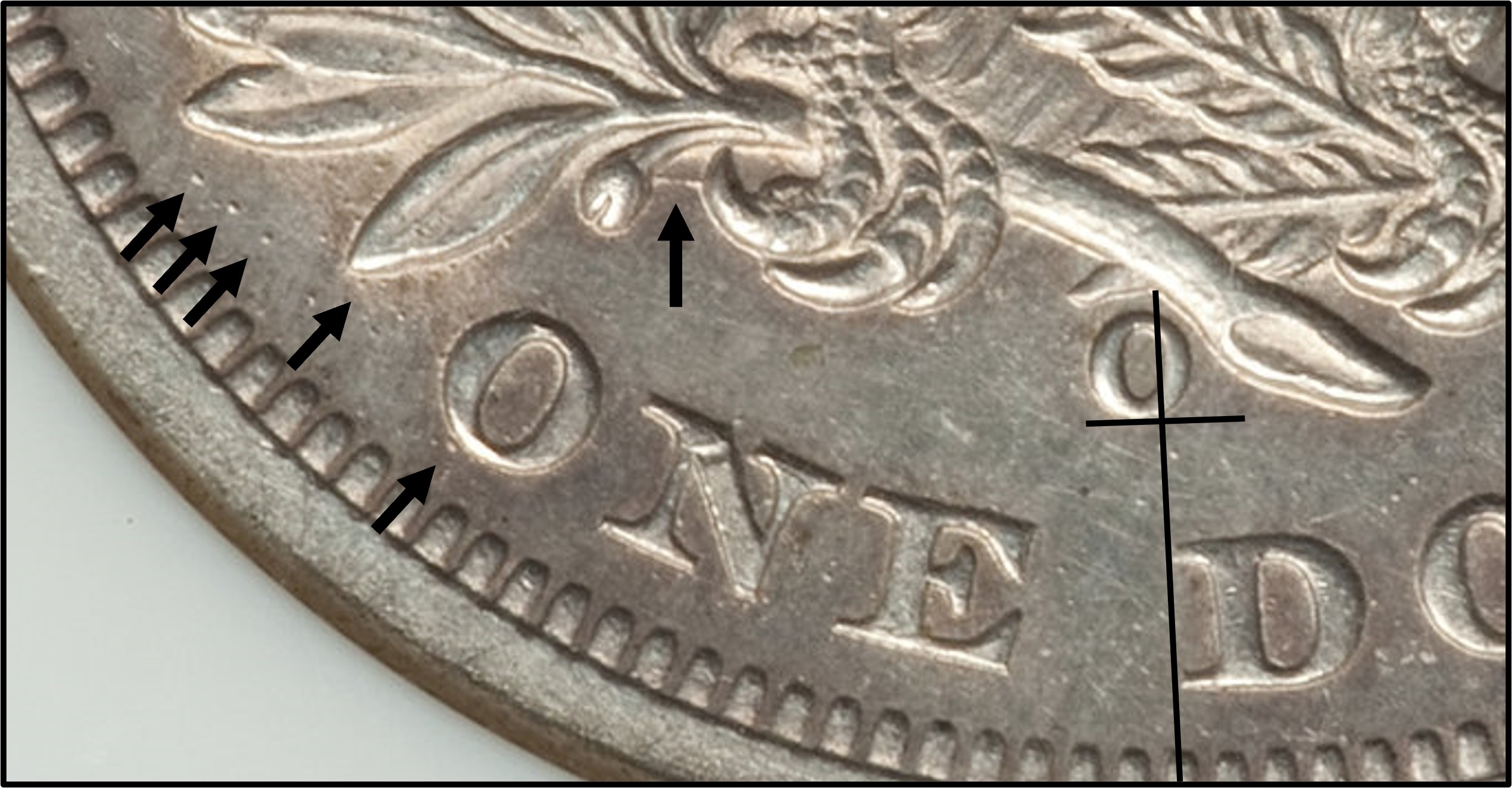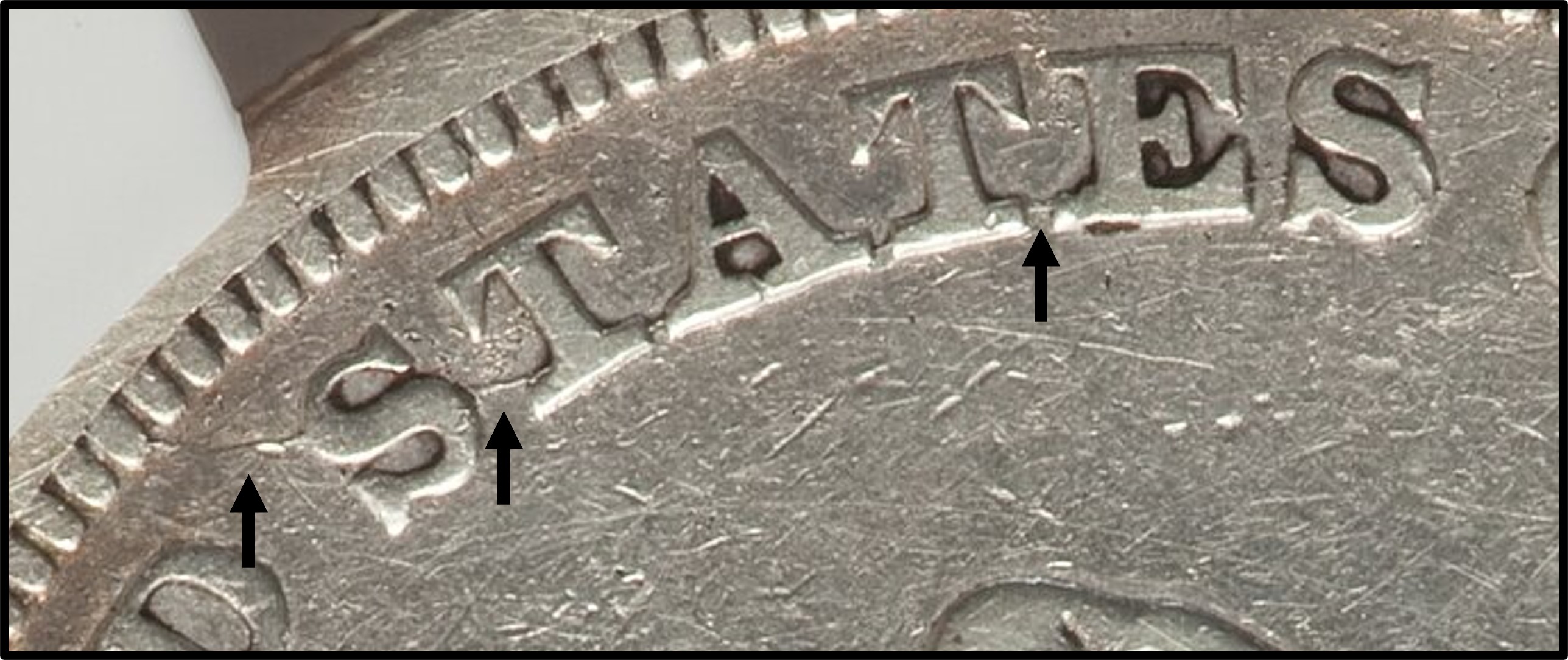|
|
Comments: This is the first of three uses of Obverse 1 and the only use of Reverse D. |
Obverse 1 The photo below shows the Obverse 1 attribution grid. Obverse 1 exhibits no notable markers, but with only two obverse dies known the date position is sufficient for attribution.  1859-O Obverse 1 attribution grid
 1859-O Obverse 1 die state b clash marks  1859-O Obverse 1 die state d clash marks No later states have been observed. OC-5 is found only with Obverse die states a and b. I've seen only a single photo of obverse die state c. Unfortunately the resolution wasn't good enough to use it for this book. I believe that the die clashed a second time and was quickly removed from service and polished. An example with this die state would be extremely rare. |
The reverse D mintmark position is virtually identical to reverse A, but numerous lumps created by die rust pits are visible around the leaves and ONE. These make it relatively easy to identify on mid- to high-grade coins. The arrows on the photo below indicate a few of the more notable features. The mintmark has virtually no rotation, different from Reverse A, which is rotated slightly clockwise. Three very notable lumps form a line just below the middle leaf. Other roughness is seen off the tip of the lower leaf. A die line connects the left-most talon with the lower berry. All these features are noted by the arrows in the photo below.  1859-O Reverse D mintmark and die markers
 1859-O Reverse D state c die crack |
| Photo credits:
Obverse 1: 1859-O NGC MS65, tied for finest known, ex. Gene Gardner, from the Heritage archives. Obverse 1 die state b: 1859-O PCGS AU53, from the Stacks-Bowers archives. Obverse 1 die state d: 1859-O ICG MS63, from the Stacks-Bowers archives. Reverse D: 1859-O NGC MS58, from the Heritage archives. Reverse D die crack: 1859-O NGC MS55, from the Stacks-Bowers archives, lot #2655. |
